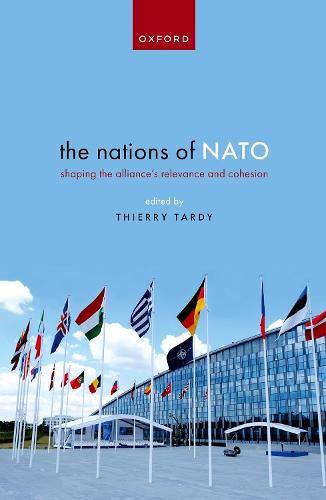Readings Newsletter
Become a Readings Member to make your shopping experience even easier.
Sign in or sign up for free!
You’re not far away from qualifying for FREE standard shipping within Australia
You’ve qualified for FREE standard shipping within Australia
The cart is loading…






War has returned to Europe, and NATO stands at the forefront of the response to Russia’s aggression in Ukraine. But how does NATO function? How do NATO member states perceive and act through the Atlantic Alliance? And ultimately how do states shape NATO’s cohesion and relevance in the face of threats?
The Nations of NATO explores national policies within the Atlantic Alliance. It examines the foreign policies of 16 allies, focusing on issues such as their strategic cultures, relationship with the United States, contributions to NATO operations, levels of defence spending, domestic challenges, and decision-making processes. The recent crisis in Ukraine has without doubt reinvigorated NATO as a military alliance, but over the last decade it has also been affected by a number of challenges, both endogenous and exogenous. Whether the Alliance is threatened from the outside (Russia, terrorism, China) or is being undermined from within (intra-Alliance politics, diverging threat perceptions) has become an increasingly debated issue. The degree to which the Alliance can adapt to evolving threats has also been at stake. At the heart of these debates are NATO allies’ policies, preferences, threat perceptions, and level of commitment to the shared enterprise.
By analysing the drivers, constraints, and specificities of relevant national policies, the volume offers an overview of NATO’s contemporary functions and challenges, and constitutes an important source of data for future research and comparative analysis.
$9.00 standard shipping within Australia
FREE standard shipping within Australia for orders over $100.00
Express & International shipping calculated at checkout
War has returned to Europe, and NATO stands at the forefront of the response to Russia’s aggression in Ukraine. But how does NATO function? How do NATO member states perceive and act through the Atlantic Alliance? And ultimately how do states shape NATO’s cohesion and relevance in the face of threats?
The Nations of NATO explores national policies within the Atlantic Alliance. It examines the foreign policies of 16 allies, focusing on issues such as their strategic cultures, relationship with the United States, contributions to NATO operations, levels of defence spending, domestic challenges, and decision-making processes. The recent crisis in Ukraine has without doubt reinvigorated NATO as a military alliance, but over the last decade it has also been affected by a number of challenges, both endogenous and exogenous. Whether the Alliance is threatened from the outside (Russia, terrorism, China) or is being undermined from within (intra-Alliance politics, diverging threat perceptions) has become an increasingly debated issue. The degree to which the Alliance can adapt to evolving threats has also been at stake. At the heart of these debates are NATO allies’ policies, preferences, threat perceptions, and level of commitment to the shared enterprise.
By analysing the drivers, constraints, and specificities of relevant national policies, the volume offers an overview of NATO’s contemporary functions and challenges, and constitutes an important source of data for future research and comparative analysis.